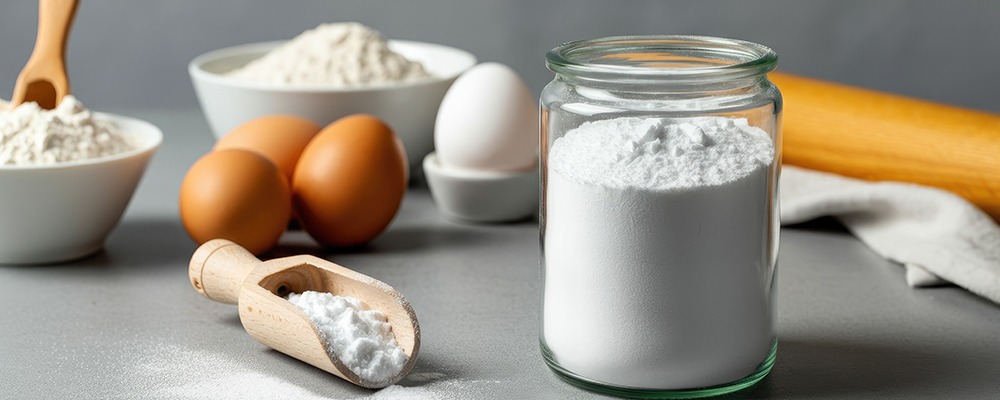The baking industry is experiencing a transformation, driven by consumer demand for cleaner, more natural ingredients. As people become more health-conscious, they scrutinise food labels more than ever, looking for products free from artificial additives and synthetic chemicals. This shift has led to the rise of the clean label movement, pushing manufacturers to rethink traditional formulations and find natural alternatives.
One of the most promising solutions to achieving clean label status in baking is the use of enzymes. These natural biological catalysts are replacing synthetic additives, improving the quality of baked goods while maintaining consumer trust. But what makes enzymes such a game-changer, and how exactly are they revolutionising modern baking? Let’s delve deeper.
<H2: Understanding Clean Label Baking :H2>
The term “clean label” has no official regulatory definition, yet it has become an industry benchmark for transparency and simplicity in food formulation. Clean label baking refers to the removal of artificial ingredients, preservatives, and chemical additives from bakery products, ensuring they contain only recognisable, natural components.
Shoppers today are looking for bread, cakes, and pastries that are free from artificial emulsifiers, preservatives, and bleaching agents. Common chemical additives such as calcium propionate (a preservative), DATEM (an emulsifier), and azodicarbonamide (a flour improver) are being phased out due to concerns about their health impact.
Instead of relying on synthetic enhancers, bakers are turning to enzymes—a natural and highly effective alternative that aligns with clean label principles.
What Are Enzymes, and How Do They Work in Baking?
Enzymes are biological catalysts—proteins that speed up chemical reactions without being consumed in the process. They are naturally present in raw ingredients like wheat flour but can also be added in controlled quantities to enhance specific properties in baked goods.
Unlike chemical additives, enzymes work with precision, breaking down complex molecules to improve texture, structure, and shelf life. Because they are completely natural and biodegradable, they fit perfectly into the clean label philosophy.
There are several types of enzymes used in baking, each serving a unique purpose:
- Amylases – Improve crumb softness and enhance fermentation by breaking down starch into simpler sugars.
- Proteases – Modify gluten structure to enhance dough handling and improve the texture of the final product.
- Lipases – Act as natural emulsifiers, replacing synthetic emulsifiers like DATEM and SSL (Sodium Stearoyl Lactylate).
- Xylanases – Improve dough extensibility and loaf volume.
- Glucose Oxidase – Strengthens dough structure, replacing chemical oxidisers like potassium bromate.
By carefully selecting and combining these enzymes, bakers can achieve the same, if not better, results than with artificial additives—without compromising the integrity of their products.
Enzymes vs. Chemical Additives: A Comparative View
For decades, chemical additives have played a critical role in commercial baking. They have been used to extend shelf life, improve texture, and stabilise dough. However, consumers are increasingly wary of these synthetic compounds, prompting the industry to seek safer and more sustainable alternatives.
Here’s how enzymes compare with traditional chemical additives:
| Feature | Chemical Additives | Enzymes |
|---|---|---|
| Function | Enhance texture, shelf life, volume | Perform the same functions naturally |
| Source | Synthetic chemicals | Natural proteins derived from microorganisms |
| Consumer Perception | Negative (linked to health risks) | Positive (perceived as natural) |
| Regulatory Approval | Some are banned or restricted in many countries | Generally recognised as safe (GRAS) |
| Impact on Labeling | Requires E-number or chemical names | Allows for a simpler, cleaner label |
For example, DATEM, an emulsifier commonly used to improve dough strength and elasticity, has been linked to potential digestive issues. In contrast, lipases—a natural enzyme—can perform the same function without the need for a chemical-sounding label.
Similarly, potassium bromate, a controversial oxidising agent, has been banned in many countries due to its potential carcinogenic effects. Instead, glucose oxidase can achieve similar results, making it an ideal natural substitute.
By switching to enzyme-based solutions, bakeries can maintain product quality while meeting consumer expectations for clean label products.
The Benefits of Enzymes in Clean Label Baking

Beyond replacing chemical additives, enzymes offer a range of benefits that improve the overall quality of baked goods:
- Natural Dough Conditioning
Enzymes help strengthen gluten networks, improving dough elasticity and stability. This is particularly useful in wholegrain and gluten-free formulations, where dough structure can be weaker.
- Extended Shelf Life without Preservatives
Many traditional bakery products rely on preservatives like calcium propionate to prevent mould growth. Enzymes such as amylases and glucose oxidase can achieve similar effects by controlling moisture levels and enhancing structural integrity, leading to longer shelf life without artificial preservatives.
- Improved Crumb Structure and Softness
Enzymes break down complex carbohydrates, leading to a finer, more uniform crumb. This results in bread and cakes that stay softer for longer without requiring additional emulsifiers or stabilisers.
- Consistency in Baking Performance
Chemical additives often require strict formulation adjustments to ensure consistency. Enzymes, on the other hand, work within natural processes, providing a more stable and predictable baking performance.
- Sustainable and Cost-Effective
Unlike synthetic additives, enzymes are biodegradable and require lower dosages to be effective. This reduces waste and overall production costs, making them a sustainable choice for large-scale bakeries.
Challenges and Considerations in Using Enzymes
While enzymes offer numerous advantages, their application requires expert formulation and careful dosage control. Since they are highly specific in function, bakers must understand how different enzymes interact with flour composition, fermentation time, and temperature conditions.
Additionally, because enzymes are proteins, they can be denatured by excessive heat or improper storage. Maintaining optimal conditions is crucial to maximising their effectiveness in baking.
However, with advances in enzyme technology and growing industry expertise, these challenges can be managed, allowing bakeries to fully embrace clean label baking without compromising product quality.
Conclusion
As consumers continue to demand more natural and transparent food products, clean label baking is becoming the new standard. Enzymes are at the forefront of this transformation, offering an effective and natural way to replace chemical additives without sacrificing product quality. They enable bakeries to create healthier, more sustainable baked goods that align with modern consumer expectations.
Biolaxi Enzymes Pvt Ltd is a leading innovator in this space, providing customised enzyme solutions for baking and other food industries. With a strong commitment to quality, sustainability, and technological advancement, Biolaxi ensures that bakers worldwide can achieve clean label excellence without compromise. As the industry moves towards a cleaner, greener future, enzymes will continue to play a pivotal role in reshaping modern baking practices.




